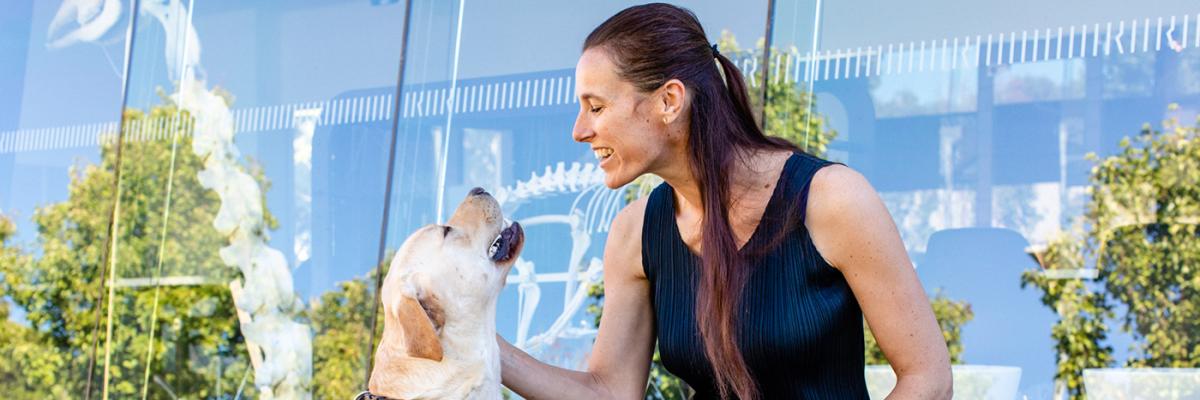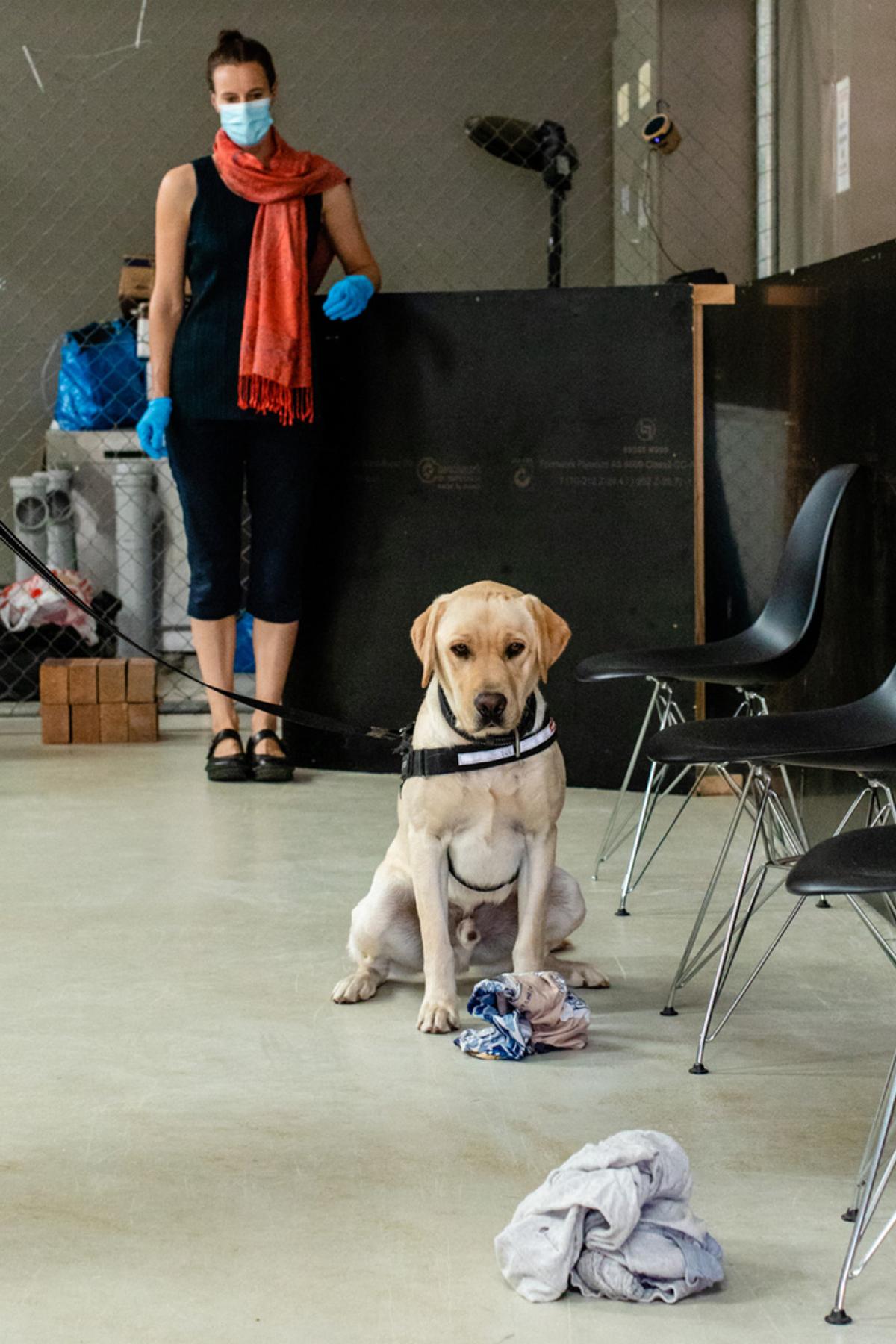Sniffing out the pandemic
Meet our labs in lab coats

Dogs can sit, stay and roll over, but can our best friends fight Coronavirus? According to Dr Anne-Lise Chaber and her team, the answer is a resounding “yes!” Anne-Lise (Senior Lecturer, researcher and dog lover) is leading the Australian arm of an international collaboration, training dogs to detect positive COVID-19 cases.
With a decade of field experience as an epidemiologist, Anne-Lise knows that a fast and reliable screening tool is essential to managing a pandemic. And dogs, with their keen sense of smell and documented ability to detect disease in humans, could be just the tool we need. Presently, Australia’s health system has two COVID screening devices at its disposal, neither of which are wholly fit for purpose. “Our problem is that PCR tests are very reliable, but they’re not rapid. RAT tests are obviously rapid, but they’re not very reliable,” said Anne-Lise.
With a view to facilitating quick identification of positive COVID-19 cases, in 2020 Anne-Lise embarked on a mission to uncover whether dogs are up to the task of rapid and accurate screening. Labradors, known for their work ethic and people-pleasing trait, were identified as an ideal breed to train.
In the early stages of the pandemic, research into dogs’ ability to detect COVID-19 had indicated encouraging results in France. Dogs can distinguish and remember a vast catalogue of scents and are already employed to sniff out narcotics, weapons and currency at airports and international borders.
Over eight to twelve weeks, Anne-Lise’s chief dog trainer Alexander Withers first teaches labs to sniff for a ‘kong’ (the beloved rubber toy) before they graduate to screening COVID positive and negative sweat samples.

Dr Anne-Lise Chaber and a COVID dog in training.
At the outset of the pandemic, sweat became an unexpectedly hot commodity, with COVID-positive sweat samples being shipped to a then largely COVID-free Australia.
Sweat is an ideal training material, as it is non-infectious and contains volatile organic compounds which dogs can detect. Later, Anne-Lise’s team developed a synthetic training aid, a cocktail of proteins applied to objects such as masks or socks for training purposes, removing the need for sweat samples.
The training methodology is based on core principles of conditioned response and positive reinforcement. The dogs learn to ‘sit and stare’ when detecting compounds associated with COVID-19, and are rewarded with a toy or food when they correctly identify a case.
The results are impressive. Once trained, dogs have displayed a diagnostic sensitivity from 87.6% to 100% (that is, their ability to return a positive result when someone is truly COVID-positive). Even more precise is the dogs’ diagnostic specificity (their ability to return a negative result when a sample is truly negative), which ranges from 96% to 100%.
Anne-Lise said the dogs have a remarkable ability to sniff out the virus and can identify both symptomatic and asymptomatic cases a day earlier than PCR tests, so long as the sample is taken during the infectious period. “Our specially trained dogs fill a gap between the two conventional testing methods. They are more reliable than RAT tests, and are faster than PCR tests,” she said.
It begs the question; how and why? Anne-Lise explained that historically, dogs and their wolf relatives have found it advantageous to sniff out weak prey. “It is widely known that predators will target sick prey. They are slower, easier to catch, and may emit an odour that attracts the predator to them,” she said.

And when it comes to sniffing out disease, it’s not just COVID-19 dogs can detect. As early as 1989, anecdotal evidence suggested dogs can sense melanoma and other cancers. Other animals exhibit similar capabilities. Bees are able to detect COVID-19 too, but are predictably more difficult to train than dogs. “Rats are used to sniff out tuberculosis in samples in Africa, and new research shows they can detect up to 70% more cases in children than the standard smear test,” said Anne-Lise.
Now, our labs in lab coats are putting their training into practice. In partnership with SA Health and SA Pathology, Anne-Lise and the University of Adelaide have trialled the dogs’ abilities in airport settings and have now moved to hospital settings. Future plans include training nurses from SA Pathology to handle the dogs, which would allow the operation to be dramatically upscaled.
According to Anne-Lise, expansion of the project is essential because even as we strive towards a new ‘COVID normal,’ the dogs still have an important role to play. “It’s true that, as a society, we will have to learn to go about our lives with COVID; but not everyone can live with COVID. We will still need screening tools in places that must remain COVID-free, such as oncology wards,” she said.
Support this research
Further investment is critical to train and deploy more dogs. If you would like to support world-class research into disease detection and mass screening, we invite you to donate.
100% of your gift will fund essential components of the COVID detector dog program. From treats and toys to expert dog trainers, every dollar contributes to innovative research which will deliver better health outcomes in Australia.
Story by Emma Dwyer
Photos by Angus Northeast
